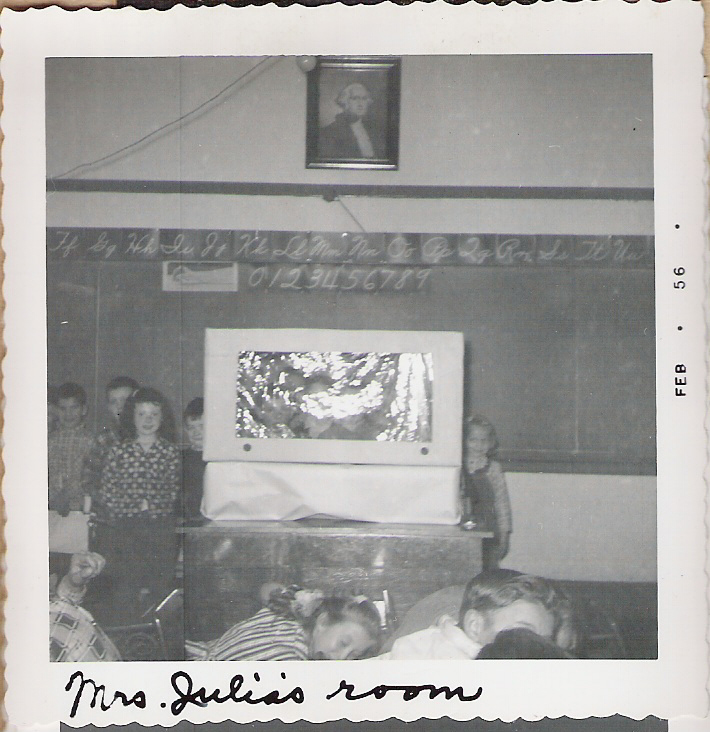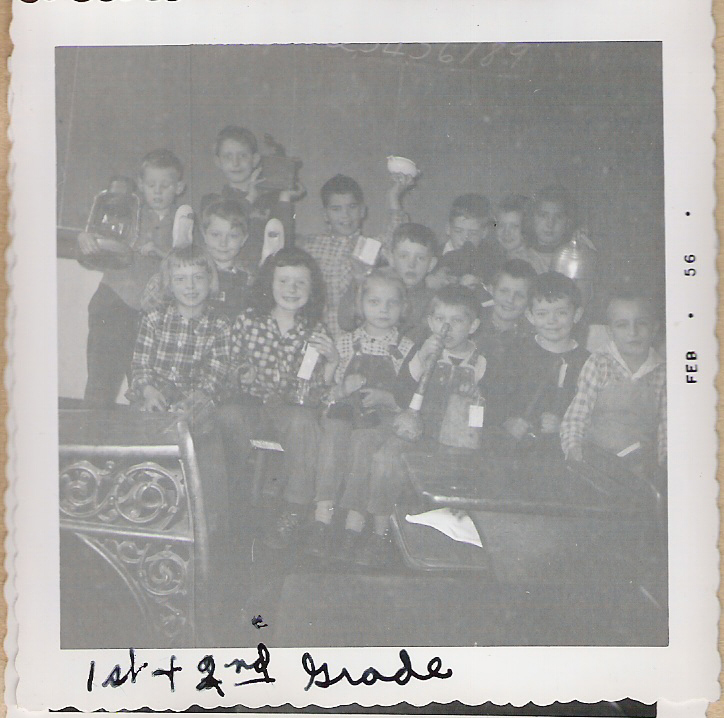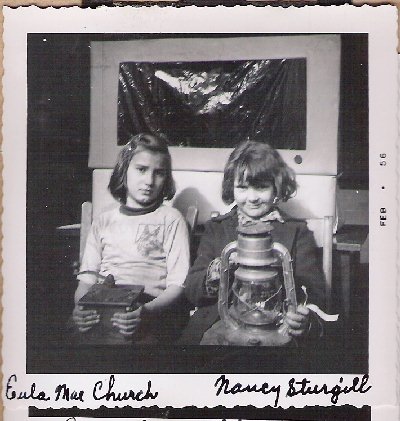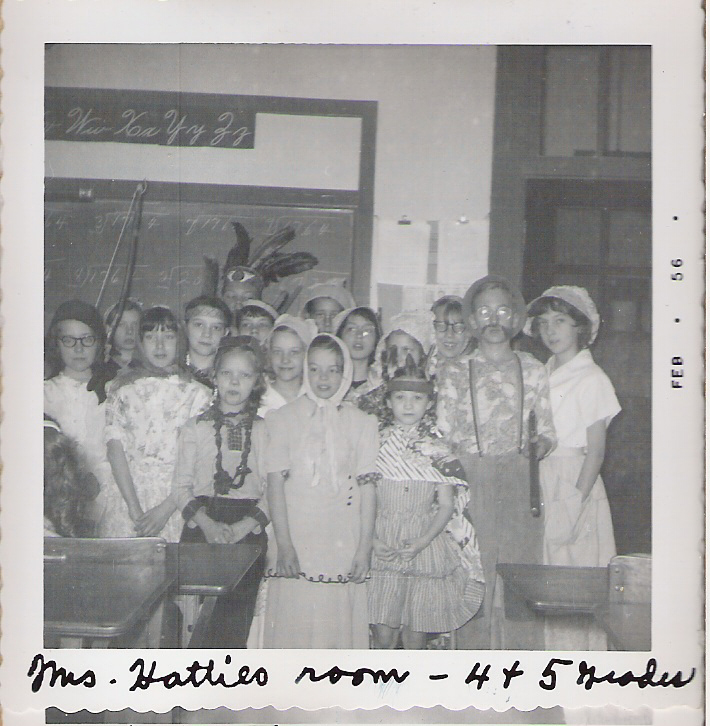

This will be given as a TV Program using a paper box with hole cut out for screen. Screen covered with cellophane. Mrs. Julia Bolling will be the Announer Announcer: This is Station W I S E – Channel 100. This Program is presented by the children in Mrs. Julia Bolling’s Room of the Flat Gap School. Mrs. Julia or better known as “Miss Julie” announcing. These children are in the First and Second Grades. This program is a birthday celebration, the 100th Birthday of Wise County. (All sing): Happy Birthday to you, Happy Birthday to you, Happy Birthday, Wise County, Happy Birthday to you. One hundred years old, One hundred years old Happy Birthday Wise County, One hundred years old. Announcer: When was Wise County made a County? Nancy Sturgill: Wise County was formed February 16, 1856 Announcer: How was Wise County formed? Danny Halcomb: Wise County was formed from parts of Lee County, Russell County, and Scott County. (Hold up a county map and point to these counties). Announcer: What County was formed from part of Wise County? Larry Mullins: Dickenson County (Point to Dickenson County on County map) Announcer: What was Wise County first named? Neil Sturgill: Wise County was first named Roan County. Announcer: How was the name changed: Paula Jean Shortt: It was changed to Wise County in honor of Governor Henry A. Wise. Announcer: What State is Wise County in? Bobby Sturgill: Wise County is in the State of Virginia. Announcer: In what part of the state is Wise County? Danny Boggs: Wise County is in Southwest Virginia. Announcer: Does Wise County have any high mountains and if so, where? Eula Mae Church: Yes, there are several mountains in the county. High Knob, near Norton, is the highest. Black Mountain, near Appalachia, is the next highest. Announcer: How many people live in Wise County? Edison Keith Halcomb: In 1950 there were 56,336 people in the County. Announcer: Name four rivers in Wise County? Larry Allen Sturgill: Pound River, Powell River, Clinch River and Guest River. Announcer: How big is Wise County? Bobby Stidham: Wise County has an area of 420 square miles. Announcer: Does the county have good roads? Danny Halcomb: Yes. U. S. 23 and Alternate 58 cross the county. State highways numbers 72, 64, 78, I60, 69 and 83 provide good traveling to all parts of the county by all the people. Announcer: How do people make a living in Wise County? Nancy Sturgill: About 5000 men work in coal mines. Some people have dairies, and others have apple orchards and sell apples. Some sell garden produce for a living. Some work in timber. There are teachers in the Wise County Schools, there are many doctors, lawyers, merchants, and people doing many other kinds of jobs and professions for a living. Announcer: Name the four Magisterial Districts in Wise County? Danny Hale: The four districts are Roberson, Gladeville, Richmond, and Lipps. We, at Flat Gap, live in Roberson District. Announcer: Can you show us on the county map where Roberson district is? Danny Boggs: (Hold up map and say) here is Roberson District. This is Pound, and this if Flat Gap. Announcer: Where is Lipps District? Larry Allen Sturgill: (Use a map. Point to the towns on the map.) Announcer: Where is Richmond District? Bobby Stidham: (Use a map. Name the towns and find them on the map.) Announcer: Where is Gladeville District? Eula Mae Church: (Use a map. Name the towns and find them on the map.) Announcer: What is the county seat of Wise County? Ronnie Gardner: The county seat is at Wise. The county offices are in the County Courthouse. Announcer: Who were the first explorers to the County? Nancy Sturgill: About 1750, Captain Christopher Gist, a scout for George Washington was supposed to be the first white man to explore this area. In 1767 Captain Daniel Boone passed through this County on his way to Kentucky. Announcer: Where were the first settlements made? Danny Halcomb: In 1770 a place near Coeburn called Guest Station. In 1786, near Norton called Prince’s Flat. Near this time Benjamin Bolling came from North Carolina and settled where Esserville now is. He sold his large tract of land for a rifle and two hound and went back to North Carolina. Later he came back and settled here at Flat Gap. He lived here the rest of his days. In 1792, Richard Wells brought his large family from North Carolina to settle in upper Powell’s Valley. Announcer: Many changes have taken place in the County in these one hundred years. Tell us some change you think has taken place. Carson Boggs: (Holding up Buggy hames) People used to travel in buggies and wagons – now they go in cars and trucks. (Holding up cow bells and sheep bells) People used to let all their animals run out in the roads. They kept bells on them so they would be easier to find when they did not come home. Announcer: Tell us another change. Billy Wayne Sturgill: (Holding a black iron tea kettle) People used to heat water in this kind of kettle over a fire in the fire place. Later they were set on grate fires to heat water. Announcer: Many changes have taken place in our homes. Tell us about them. Burma Sue, Paula Jean, Esther: (Holding up irons) This iron had to set on the stove or fire to heat. Today we use electric irons. (One girl will hold an electric iron.) Announcer: Tell us another change. Eula Mae Church: (Holding up an old coffee mill). People used to buy coffee as green coffee, then they parched it in the stove until it was brown. Then they ground it on a mill something like this. Announcer: How do we make coffee today? Nancy Sturgill: We buy coffee already parched and ground. We make it in Drip-O-Lators, Percolators and Electric Pots. Some coffee is so finely ground it can be made in the cup. This is called Instant Coffee. Announcer: Can you think of another change? Larry Mullins: Yes, people used to use kerosene lamps and lanterns for light. (Hold up a lantern and lamp.) Now they use electric lights. Announcer: What else can you think of? Danny Boggs: (Holding up a blanket and rug) Many people used to weave all the clothfor their clothes. This blanket was woven by Liz Gibson. She wove rugs too. Announcer: How has the laundry problem in the home changed? Keith: The mothers used to make all their laundry soap. (Hold up homemade soap). They used washboards and big kettles to boil clothes outdoors. Now many homes have automatic washers and dryers, buy soaps and cleansers of all kinds on the market. Announcer: Do you think of other changes? Paula: Most homes have better water supplies. Gourds were used as dippers in the early days and water came from springs and dug wells. Today many homes have running water using electric pumps. (Show gourds) Announcer: Are there other changes? Yes. Electric equipment has taken the place of the old dasher churn, the corn popper with the long handle. People send their shoes to a shoe-shop instead of mending them at home. Many homes are heated with furnaces instead of grates and stoves and fireplaces. Canning and drying of foods have given place to deep-freezing. Announcer: Yes, there are many other changes that we have not mentioned, but times does not permit us to tell about them all. And now a word from our sponsors, the Wise County School Board, Superintendent J. J. Kelly, Jr. and Mr. W. D. Richmond, Director of Education in Wise County. We hope you have enjoyed learning a little about the history of Wise County for the past 100 years. This is Mrs. Julia and her room signing off. So long for another 100 years. |










|
|
|
|
|
|